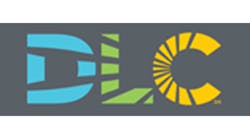The DesignLights Consortium (DLC) recently released the second version of an updated commercial lighting policy that combines continued emphasis on persistent energy savings with greater focus on the controllability and quality of light demonstrated by products approved for the DLC’s Qualified Products List (QPL).
The DLC is a resource for the lighting industry, utilities, and others seeking to glean more efficiency from LED technologies. Its proposed SSL Technical Requirements Version 5.0 (SSL V5.0) – the first draft of which was released in January – will inform the design of commercial lighting energy efficiency incentive programs offered by scores of utility companies across North America. The DLC revised SSL V5.0 after considering more than 1,000 comments from 46 organizations regarding the first draft, including lighting manufacturers and designers, utilities, testing labs, and non-profit groups, as well as feedback received during the DLC’s 2019 annual stakeholder meeting in April. The final SSL V5.0 requirements are expected to be released in January, following an additional comment period that runs through November 8. Detailed information about when the requirements will take effect is included in draft two.
“This new performance standard is designed so that users of the QPL are ensured the added benefits that LED lighting can provide for a better experience and greater opportunity to save energy,” says DLC Executive Director Christina Halfpenny. “Draft two of the policy is responsive to feedback we heard from the lighting industry on issues such as appropriate metrics and the burden of testing. With this version, we are aiming to implement new requirements on a timeline that aligns with industry development cycles and current research.”
The DLC has boosted efficiency standards three times since publication of its initial QPL in 2009 – and includes a “premium” designation worthy of higher utility incentives. SSL V.50 will again increase minimum efficacy requirements for QPL listing – by an average of 10.8% and up to 23% for some lighting categories. Other specifics of the policy include a requirement that virtually all indoor luminaires and retrofit kits are dimmable and that there are color quality requirements that promote consistency over time. It also provides for a DLC Premium classification to assure better confidence in the glare performance of listed products.
SSL V5.0 is the first of a series of specifications designed to improve the quality of light produced by high performing, energy-efficient commercial lighting, defined as aspects of light that impact people’s productivity, performance, comfort, mood, health, and safety. The policy lays the groundwork to capture and promote continuing advances and innovation in human-centric lighting characteristics such as color performance, flicker, glare, and light distribution, as well as to increase available information about controls functionality to enable installed technology to yield maximum energy savings and user benefits.
The DLC’s SSL V5.0 requirements come amid rapid technology advances and market shifts occurring since LEDs entered the general lighting scene around 2010. As the LED market has matured, a drive to reduce production costs in the face of mounting competition has tended to sideline the importance of product quality aspects such as glare control, optical distribution, color quality, and reduced flicker. By contrast, the DLC is now moving to favor efficient lighting products that also provide an array of non-energy benefits, from improving workplace performance and safety to reducing eye strain and headaches and boosting mood. Once finalized and implemented, the new policy will result in new listed information for each product added to the DLC’s QPL, helping lighting decision makers choose products that best align with customer needs. Proposed lighting controllability requirements will support increased energy savings while also promoting better quality of light for people who live and work in the built environment.
The DLC will host a webinar outlining the updated policy on October 15.



